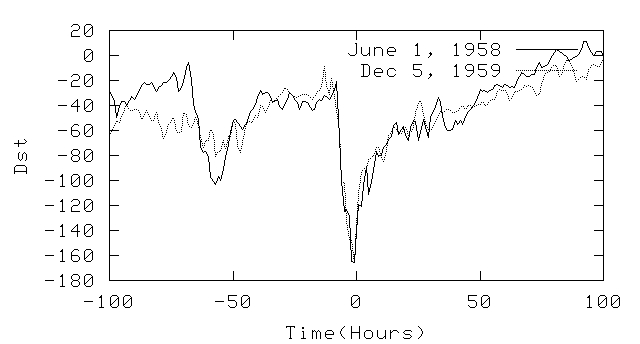Recurrent Patterns in Dst
Hee-Jeong Kim[1]
,*Wongyu Choe [1],Gordon Rostoker [1]
Yohsuke Kamide [1]
STEL, Nagoya University, Toyokawa, Aichi, Japan[1]
We have analysed hourly Dst values to find recurrent patterns
for the years 1957-2000. Events with large magnetic disturbance
are identified, and the difference in Dst time series between
each events are computed. Based on the difference table, we identified
families of events in Dst.
Efforts to predict magnetospheric activity levels that may be sufficiently high to disturb manmade technological systems have centered around the use of the Dst index. Dst is defined as the instantaneous global average of the equatorial magnetic H-component distribution, and when the value of this index becomes less than -50nT this is thought to indicate the presence of a magnetic storm. We have analysed the Dst hourly values for the years 1957-2000 to find recurrent patterns in the time variation of the index. An event is defined as a local minimum in the Dst time series with a minimum value less than -50nT. We have identified 807 such events for the period. Then pairs of events are compared, where each event is paired with every other events, and the difference of the Dst time series between the two events is evaluated. The event pairs are then sorted according to increasing value of the difference and it is attempted to identify families of events based on the difference estimates. Figure 1 shows two events with a relatively small difference, one taking place on June 1, 1958 and the second on December 5, 1959. The two events are quite similar over the two day interval centered on T=0 leading us to suggest that the two events belong to a common family. Using a cluster algorithm, we can find clusters, or categories of events in the Dst time series.

Recurrent Patterns in Dst